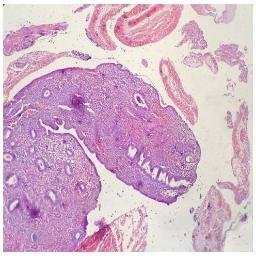Virus Expression Database



Submitted by Daisuke Okuzaki (Osaka university, Japan) on May 19 2020
Platform: ngs – Illumina NextSeq 500 (Homo sapiens) 
Pubmed: None listed
Summary Coronavirus disease 2019 (COVID-19) is a disease that causes fatal disorders including severe pneumonia. To develop a therapeutic drug for COVID-19, a model that can reproduce the viral life cycle and can evaluate the drug efficacy of anti-viral drugs is essential. In this study, we established a method to generate human bronchial organoids (hBO) from commercially available cryopreserved primary human bronchial epithelial cells (hBEpC) and examined whether they could be used as a model for severe acute respiratory syndrome coronavirus 2 (SARS-CoV-2) research. The hBO were found to contain basal, club, ciliated, and goblet cells. Also, angiotensin-converting enzyme 2 (ACE2), which is a receptor for SARS-CoV-2, and transmembrane serine proteinase 2 (TMPRSS2), which is an essential serine protease for priming spike protein of SARS-CoV-2, were highly expressed. After hBO were infected with SARS-CoV-2, remarkable amplification of the viral genome and the expression of spike protein of the virus was confirmed. In addition, cytotoxicity and pyknosis cells were observed due to the virus infection. Furthermore, treatment with camostat, an inhibitor of TMPRSS2, reduced the viral copy number to 2% of the control group. RNA-seq analyses revealed genes whose expression was altered by SARS-CoV-2 infection and camostat treatment. These results suggest that our hBO are acceptable for SARS-CoV-2 infection and replication, but also can be used as a model for COVID-19 drug discovery.
| ID | Title | Cell Type | Timepoint | Reported Virus | Virus Species | Exclusion Reason |
|---|---|---|---|---|---|---|
| GSM4559193 | Ctl_1: uninfected hBP_rep1 | bronchial epithelial cell  |
uninfected | Uninfected | ||
| GSM4559194 | Ctl_2: uninfected hBP_rep2 | bronchial epithelial cell  |
uninfected | Uninfected | ||
| GSM4559195 | Ctl_3: uninfected hBP_rep3 | bronchial epithelial cell  |
uninfected | Uninfected | ||
| GSM4559196 | V_1: SARS-CoV-2_rep1 | bronchial epithelial cell  |
5 days | SARS-CoV-2 | Severe acute respiratory syndrome-related coronavirus | |
| GSM4559197 | V_2: SARS-CoV-2_rep2 | bronchial epithelial cell  |
5 days | SARS-CoV-2 | Severe acute respiratory syndrome-related coronavirus | |
| GSM4559198 | V_3: SARS-CoV-2_rep3 | bronchial epithelial cell  |
5 days | SARS-CoV-2 | Severe acute respiratory syndrome-related coronavirus | |
| GSM4559199 | VC_1: SARS-CoV-2+camostat_rep1 | bronchial epithelial cell  |
SARS-CoV-2 | Severe acute respiratory syndrome-related coronavirus | Extra interventions camostat treated |
|
| GSM4559200 | VC_2: SARS-CoV-2+camostat_rep2 | bronchial epithelial cell  |
SARS-CoV-2 | Severe acute respiratory syndrome-related coronavirus | Extra interventions camostat treated |
|
| GSM4559201 | VC_3: SARS-CoV-2+camostat_rep3 | bronchial epithelial cell  |
SARS-CoV-2 | Severe acute respiratory syndrome-related coronavirus | Extra interventions camostat treated |
|
| GSM4559202 | A549_1: A549_rep1 | non-small cell lung adenocarcinoma cell line  [A-549 [A-549  ] ] |
uninfected | Uninfected | ||
| GSM4559203 | A549_2: A549_rep2 | non-small cell lung adenocarcinoma cell line  [A-549 [A-549  ] ] |
uninfected | Uninfected | ||
| GSM4559204 | A549_3: A549_rep3 | non-small cell lung adenocarcinoma cell line  [A-549 [A-549  ] ] |
uninfected | Uninfected | ||
| GSM4559205 | lungNHBE_1: hBEpC_rep1 | bronchial epithelial cell  |
uninfected | Uninfected | ||
| GSM4559206 | lungNHBE_2: hBEpC_rep2 | bronchial epithelial cell  |
uninfected | Uninfected | ||
| GSM4559207 | lungNHBE_3: hBEpC_rep3 | bronchial epithelial cell  |
uninfected | Uninfected | ||
| GSM4559208 | lungORG_1: hBO_rep1 | bronchial epithelial cell  |
uninfected | Uninfected | ||
| GSM4559209 | lungORG_2: hBO_rep2 | bronchial epithelial cell  |
uninfected | Uninfected | ||
| GSM4559210 | lungORG_3: hBO_rep3 | bronchial epithelial cell  |
uninfected | Uninfected |